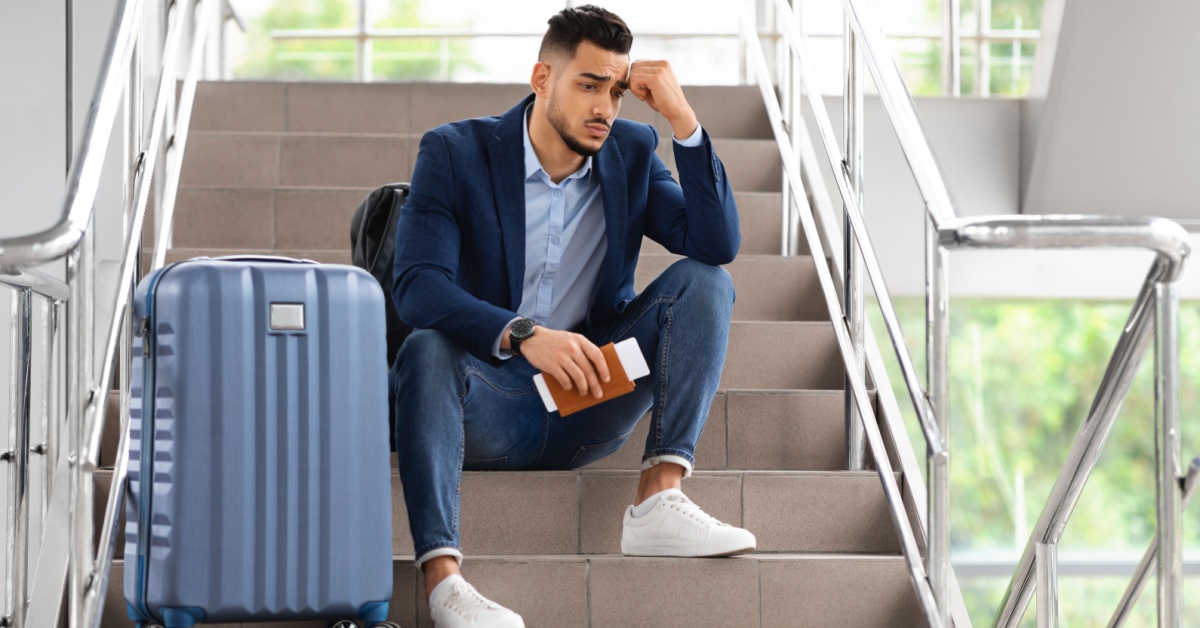Fear of Flying (or Aerophobia): How to Deal with It

Data publicării: 07-01-2025
Actualizare la: 18-02-2025
Subiect: Sănătate mentală
Durată de citire estimată: 1 min.
Autor articol
Clara VaiRedactor medical
Giulia GialdiEditor și traducător
Anastasiia ByvaltcevaFear is an emotion that is far from pleasant to experience, yet it is very valuable because it alerts us and prompts us to react to danger. However, when it manifests in a way that is disproportionate to the perceived stimulus, we might be facing a true phobia. These unfounded fears, or phobias, are present in people’s daily lives, but there are periods or situations that can exacerbate the symptoms.
The fear of flying is one of these phobias and becomes more intense during vacation periods, when the idea of travel, and then the journey itself, is experienced with anguish. However, if properly treated, aerophobia can be overcome. We discuss this with Dr. Giulia Gialdi, psychologist and psychotherapist at the Istituto di Cura Città di Pavia.
Aerophobia: What It Is and What It Entails
Aerophobia, as the term itself suggests, is the fear related to flying or traveling by airplane. It is an intense and irrational fear that, like all phobias, manifests through anxiety attacks triggered by a situation that poses no real danger. Often, this fear of flying is associated with concerns about:
- flight safety;
- claustrophobia;
- loss of control over the situation and one's emotional reactions.
People suffering from aerophobia often opt for vacation destinations that do not require air travel or choose routes that involve using multiple ground transportation methods, taking longer, rather than boarding a plane. For those who must fly for work-related reasons, the journey often becomes a genuinely traumatic event.
Although these fears are unfounded, it is clear that individuals with severe phobias often limit their own lives, as well as the lives of their loved ones, by avoiding or significantly reducing travel and opportunities.
An irrational fear closely connected to aerophobia is the irrational fear of travel in general. Such individuals often dread leaving their homes, further restricting the lives of family members, as they fear something might happen while they are away, such as a burglary.
Symptoms
he main symptoms of aerophobia include:
- palpitations;
- excessive sweating;
- shortness of breath (dyspnea);
- trembling or hot flashes;
- tingling in the limbs;
- intestinal issues;
- intrusive and obsessive thoughts.
In some cases, these symptoms can escalate into a full-blown panic attack.
We should also consider the psychological symptoms that often accompany these situations:
- catastrophic thoughts ("The plane will crash");
- active avoidance of situations involving flying and a constant feeling of loss of control or imminent danger.
These symptoms can appear days or even weeks before the flight, progressively worsening as the experience approaches.
Causes
The lack of control, such as not being the one in charge of the vehicle, and the inability to leave the means of transport, are among the strongest factors contributing to the development of this phobia.
Another element that can worsen the experience of being on a plane is time: the longer the flight, the stronger the fear tends to become. This fear often overlaps with other phobias, such as claustrophobia, which involves a fear of enclosed spaces.
Aerophobia can also arise from a combination of psychological factors, personal experiences, and genetic predispositions. Among the main causes are:
- negative experiences related to flying, such as severe turbulence or onboard emergencies;
- hearing stories of accidents or being exposed to dramatic events through media coverage;
- genetic predisposition to anxiety, which can contribute to the development of a phobia.
How to Overcome the Fear of Flying
Overcoming the fear of flying, or aerophobia, requires a combination of practical strategies and psychological techniques. The most recommended therapy for these cases is cognitive-behavioral therapy (CBT), which has proven to be the most effective according to research.
Various methods can be used to overcome the phobic stimulus, including virtual reality in cases where the stimulus is not easily accessible, such as fear of flying.
The essential steps are:
- Understanding the fear and learning to manage negative thoughts through cognitive restructuring techniques, replacing catastrophic thoughts with realistic and reassuring reflections.
- Using relaxation techniques such as deep breathing or mindfulness practices to focus on the present moment and avoid anticipating fears or unlikely scenarios.
- Implementing exposure techniques, where the individual gradually confronts flight-related situations to reduce anxiety and become accustomed to the experience over time.
Developing a positive attitude toward flying can also be helpful. For example:
- Thinking of the flight as a necessary and temporary part of a rewarding experience, such as a vacation or work trip.
- Visualizing the landing and the enjoyable moments that will follow the flight to shift focus away from fear.
By adopting this approach, individuals can learn to redirect their attention toward something positive, rather than dwelling on catastrophic consequences.
Main Types of Phobias
Phobias are categorized into three main types, as recognized in clinical practice. Each phobia can vary in intensity and its impact on daily life:
-
Specific Phobias: These involve intense and irrational fears triggered by specific objects, situations, or animals. Examples include fear of animals, heights, closed spaces, flying, and more.
-
Social Phobias: Also known as social anxiety disorder, these are marked and persistent fears of social situations or performance scenarios. Individuals with this phobia fear being negatively judged, embarrassed, or humiliated.
-
Agoraphobia: This is the fear of being in places or situations where escape might be difficult or help unavailable in case of a panic attack. Common examples include open spaces, public transportation, or crowded areas.